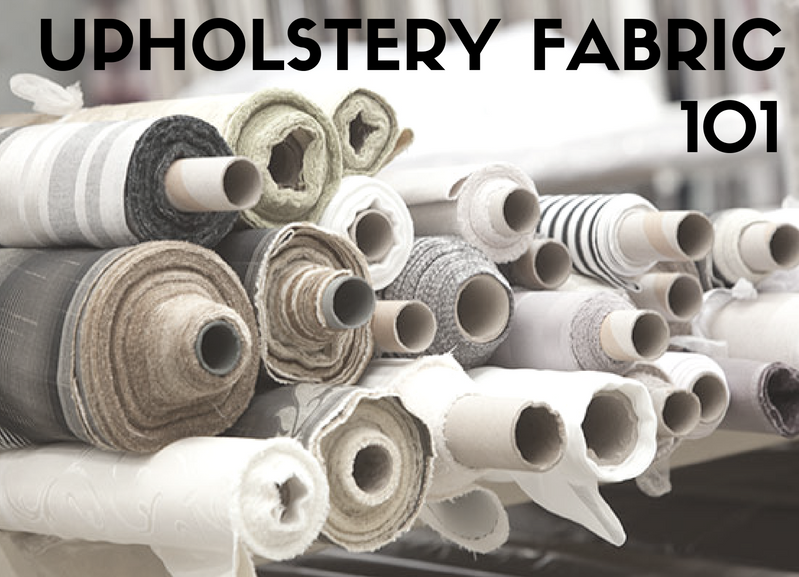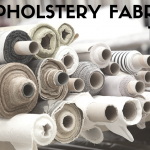Choosing fabric for an upholstered piece of furniture can be a confusing task. From rubs and grades, to various natural and synthetic fibers, to lighting and colour change in each space; it gets overwhelming. But these things all factor into the quality and price of a piece of furniture. Most of the time when finding a fabric, there will be three important pieces of information that are usually found on the back of the sample:
- Double-Rub or Abrasion
- Synthetic vs. Natural Fibers
- Clean-ability
You’re probably wondering, that’s great but what does it all mean?
Double-Rub or Abrasion:
Double-rubs are a measurement of a fabrics abrasion resistance. The fabric manufacturer takes the fabric and places in into a machine that passes a testing pad back and forth over the fabric until it is worn out. Each back and forth pass is known as a Double-Rub. Some designers may also call this Abrasion data. It is important when selecting your fabric for an upholstered piece that you take into account the double-rub count. Domestic fabrics are usually rated to start at 30, 000 double-rubs, where as commercial grade fabrics usually start at 80, 000 double-rubs. However depending on the upholstered piece and the amount of use, there is flexibility with all ratings.
Synthetic vs. Natural Fibers:
What is the difference between natural and synthetic fibers? Natural fibers are fibers that are obtained from plant, animal, and mineral sources. For example, silk, cotton, leather, linen, rock, glass, metal, hemp, and wool, and so on. Synthetic fabrics on the other hand are made from fibers that are manufactured or chemically created in a lab, such as nylon, polyester, vinyl, bonded-leather, and acrylic.
Cotton: Is a soft, breathable, and durable fabric, however has a tenancy to wrinkle and stretch easily. If exposed to direct sunlight, it can fade or yellow (prolonged exposure may even weaken the fabric). One way to assure a stronger, durable cotton fabric is to blend a cotton fiber with synthetic fibers, which also can result to having a stain-resistance fabric.
Linen (Flax): Linen fabrics are made from a flax plant. This crisp, cool fabric resists pilling and soiling, but it does wrinkle easily. Though linen is less likely to fade than cotton, intense sunlight can weaken the fabric. One important thing to keep in mind is the wash-ability. 100% linen should be professionally dry cleaned to avoid shrinking, however certain blends make the fabric washable, as well more durable.
Wool: Sturdy and durable, wool and wool blends offer good resistance to pilling, fading, wrinkling, and soil. Generally, wool is blended with a synthetic fiber to make it easier to clean and to reduce the possibility of felting the fibers (causing them to bond together until they resemble felt).
Polyester: Polyester fibers are both strong and durable. When polyester fibers are blended with other fibers, this can then produce reduced fading, provide wrinkle resistance, reduce stretching and shrinking fabrics. An additional bonus, unlike many other fibers, it stands up well to sunlight.
Nylon: One of the strongest fibers, nylon is usually combined with other fibers to create durable, stain and wrinkle resistant fabrics. Nylon is very resilient and can help prevent the crushing of napped fabrics such as velvet. On the downside, it is sensitive to sunlight.
Acrylic: Acrylic fibers are lightweight, soft, and warm. They can resist wear, wrinkling, soiling, and fading. Many velvet’s include acrylic fibers, as well as outdoor fabrics such as Sunbrella.
Clean-ability:
Fabrics should be marked with a code that allows the buyer to know in advance, what type of cleaning is suggested. Some popular ones include:
- W – Water based: This means that your fabric or furniture piece can be cleaned with water based solutions such as little foam from a mild detergent or non solvent upholstery shampoo. Use as little foam and water as possible to do the job; you don’t want to get the upholstery too wet. An optional tip, vacuum over top of the spot once cleaned.
- S – Solvent: Clean with a mild water-free dry-cleaning solvent. Use a little to make sure you have plenty of ventilation. This type of material will not respond well if water goes on it.
- S/W – Water-based cleaning agent or solvent: Depending on the stain, you can use a dry-cleaning solvent, the foam of a mild detergent, or upholstery shampoo.
- X – Don’t clean it yourself: Hire a professional. Most of the time this means that the item is not cleanable and is vacuum-only.



